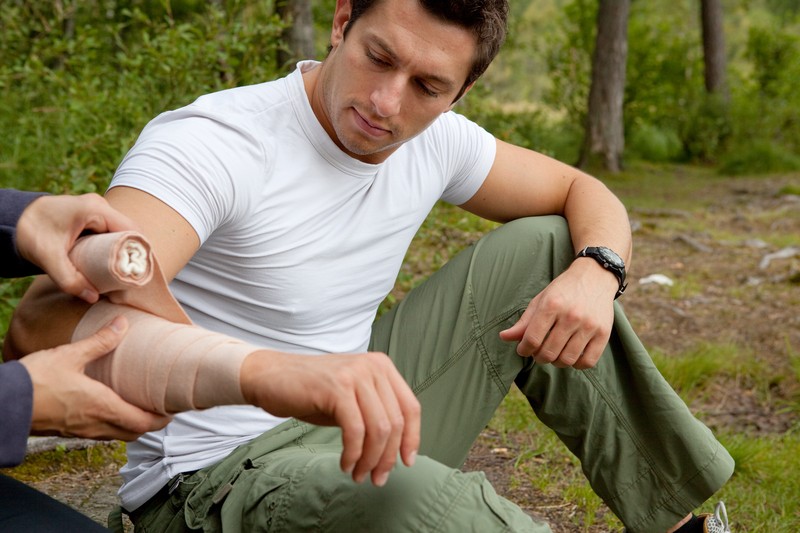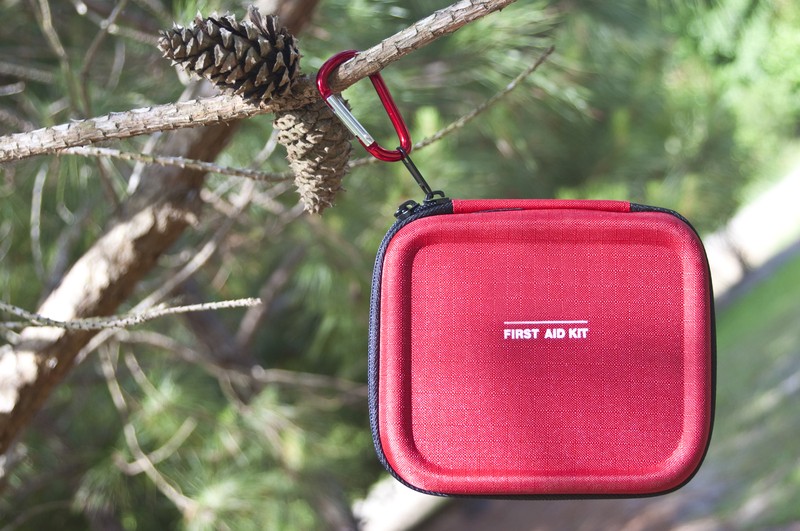Typically when you go outdoors – whether its for a weekend of camping or a you're just spending the day hiking, rock climbing or fishing – you bring some sort of first aid with you. Die Hard Survivors are always working to be prepared. So if you're like us, you almost always will have with you a small first aid kit. These will come in VERY handy should you or someone you're with hurt themselves.
Open Wounds
By taking proper care of the wound you can reduce further contamination and promote healing. Clean the wound as soon as possible after it occurs by–
- Removing or cutting clothing away from the wound.
- Always looking for an exit wound if a sharp object, gun shot, or projectile caused a wound.
- Thoroughly cleaning the skin around the wound.
- Rinsing (not scrubbing) the wound with large amounts of water under pressure. You can use fresh urine if water is not available.
The “open treatment” method is the safest way to manage wounds in survival situations. Do not try to close any wound by suturing or similar procedures. Leave the wound open to allow the drainage of any pus resulting from infection. As long as the wound can drain, it generally will not become life-threatening, regardless of how unpleasant it looks or smells.
Cover the wound with a clean dressing. Place a bandage on the dressing to hold it in place. Change the dressing daily to check for infection.
If a wound is gaping, you can bring the edges together with adhesive tape cut in the form of a “butterfly” or “dumbbell”.

Boils
Apply warm compresses to bring the boil to a head. Then open the boil using a sterile knife, wire, needle, or similar item. Thoroughly clean out the pus using soap and water. Cover the boil site, checking it periodically to ensure no further infection develops.
Fungal Infections
Keep the skin clean and dry, and expose the infected area to as much sunlight as possible. Do not scratch the affected area. During the Southeast Asian conflict, soldiers used anti-fungal powders, lye soap, chlorine bleach, alcohol, vinegar, concentrated salt water, and iodine to treat fungal infections with varying degrees of success. As with any “unorthodox” method of treatment, use it with caution.
Trench Foot
This condition results from many hours or days of exposure to wet or damp conditions at a temperature just above freezing. The nerves and muscles sustain the main damage, but gangrene can occur. In extreme cases the flesh dies and it may become necessary to have the foot or leg amputated. The best prevention is to keep your feet dry. Carry extra socks with you in a waterproof packet. Dry wet socks against your body. Wash your feet daily and put on dry socks.
Learning appropriate wound care is extremely important. Especially if you are going to be out in nature for a period of time without the availability of medical professionals. We recommend printing the information above and placing it in your first aid kit. Our memory is pretty solid, and we're sure yours is as well. But for something as essential as first aid care and avoiding infections, you don't want to accidentally forget a step or how to treat something that could end up be as scary as having your foot or leg amputated (Trench Food). So write it down or print it out – whatever you want – but keep the info handy and accessible in case you need it.
We appreciate the factual information provided by Wilderness Survival. They know their stuff! For even more awesome tips, check out their site here.

Honestly, the one sure fire way I’ve found to avoid infections.
Is exposure. Your immune system is like a muscle of you use it, it gets stronger.
Considering I usually get sick one day a year, and solve it with whiskey and a steaming hot bath. I think I’m on to something.